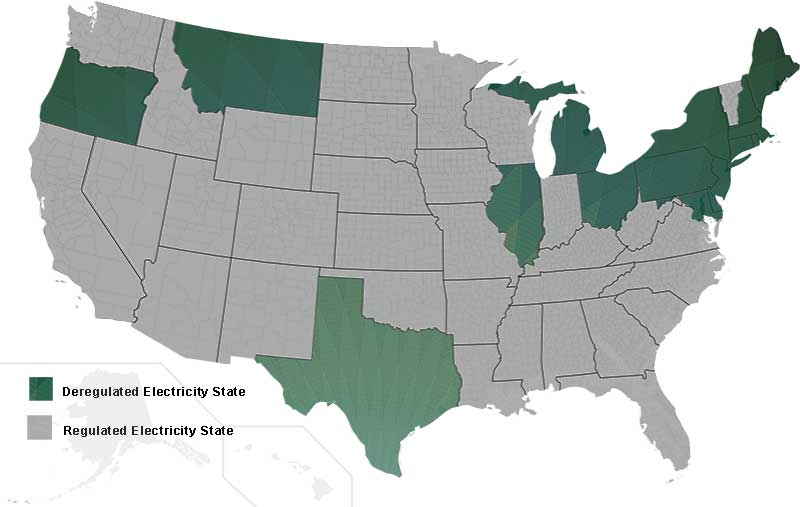Last Updated on April 7, 2021 by Mary Pressler
Average Electricity Costs & The Effect of Energy Deregulation
The History of Deregulated Electricity in the United States
Electricity companies have operated as regulated monopolies for most of their history, with control over generation, transmission and distribution. However, the Energy Policy Act of 1992 introduced electricity deregulation, which changed the rules of the game and impacted the average electricity costs by state:
- Individual states could now create competitive energy markets, where private generating companies can participate and sell electricity though the local power grid.
- New companies called energy retailers were created in the electricity sector. They purchase energy in the wholesale market and resell it to residential and business users.
Transmission and distribution remain as a regulated monopoly, where each region is served by a single utility company. Deregulating this area of the supply chain would not be viable, since competing electric companies would need to have redundant power networks.
What Is the Purpose of Deregulated Energy in the United States?
The goal of deregulation is increasing the efficiency of the electricity sector. The optimal combination is achieved as follows:
- Allowing customer choice in the consumption side.
- Creating a competitive market for power generation.
- Leaving only grid infrastructure as a regulated monopoly.
Under this operating scheme, electricity consumers can choose their provider, and a delivery tariff is added to the kWh price to cover network costs.
The concept of energy deregulation is not exclusive for electricity, and a similar approach has been implemented for natural gas. There are states where both services are already deregulated, and states where one or both remain regulated.
When a state deregulates its electricity sector, electric companies normally split into separate business units. The regulated utility company continues operating the power network, while generation assets are now managed separately. However, deregulation laws forbid utility companies from offering benefits to the generation units previously owned by them, and all power producers compete under equal conditions.
According to the US Energy Information Administration, competitive electricity sales increased from 11% to 21% between 2005 and 2016, while sales from regulated utility companies decreased from 62% to 52%. This indicates a slow but steady transition from regulated to deregulated utilities.

